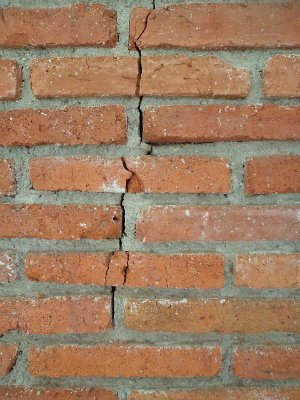We say it all the time: your home is the biggest purchase you’ll make in your life. Therefore getting a home inspection will help you protect your investment.
For many, getting blinded by your love for a home is easy. But the reality is once you get that home inspection report back, there will be a few marks and possibly some that are worrying.
A perfect home inspection report does not exist, as there will always be some marks. And while it’s natural to feel a little anxious about it, it’s totally normal. You’ll need to have an idea of your deal breakers and tolerance level before beginning the search for a home. There will always be issues that some people are willing to stick around and tackle while others would rather cut their losses and continue with the search.
However, there are red flags that both realtors and home inspectors agree on as signs to kill the deal and move on. If you come across these issues, you may want to think twice before proceeding.
1. Major Foundation Issues
Cracks and other irregularities in the foundation can be extremely expensive, upwards of $10,000, to repair. Aside from this, you must consider the fees for landscaping repair to correct the problem if an excavation is necessary.
Although some foundation repairs are minor and only require a couple hundred dollars, you can only be sure after contracting a licensed structural engineer to assess the problem.
Many seasoned home professionals agree that first-time buyers should avoid major foundation issues as they may lack the funds and experience to take on this problem.
2. Buried Oil Tanks
While more common in areas with harsher winters, such as the Northeast, this American tradition is one that could be harmful to your home today.
Before electrical heating, many had underground tanks that sent propane to the house throughout winter. Obviously, there is a handful of possible problems that could come from this. But common ones are leaks (that lead to soil contamination), sink holes, and drainage problems. Much like the foundation issue, a tank removal will cost you well into the thousands.
3. Polybutylene Plumbing Pipes
If this comes across your report, we say make a run for it. These plumbing pipes are a product of the 80s and they should have stayed there.
These pipes were initially favored as cheap alternative to copper, but are more likely to leak and could cause issues like mold, structural damage, or the headache that goes with a burst pipe.
Most homeowners haven’t replaced the pipes if they haven’t personally encountered an issue. Save yourself the trouble from having to deal with this potentially disastrous problem.
Should You Stay or Should You Go?
In the end, the choice to stop the buying process or decision to tackle the issues is your decision alone. Your financial standing, how much you’re comfortable with shelling out, and the amount of time you have will be the biggest factors.
You don’t have to make these tough decisions alone. An expert home inspector can be a huge help! Let a home inspection add an extra layer of security to the biggest investment you’ll ever make.
Don’t hesitate to get in touch with us today!
We Can Help




